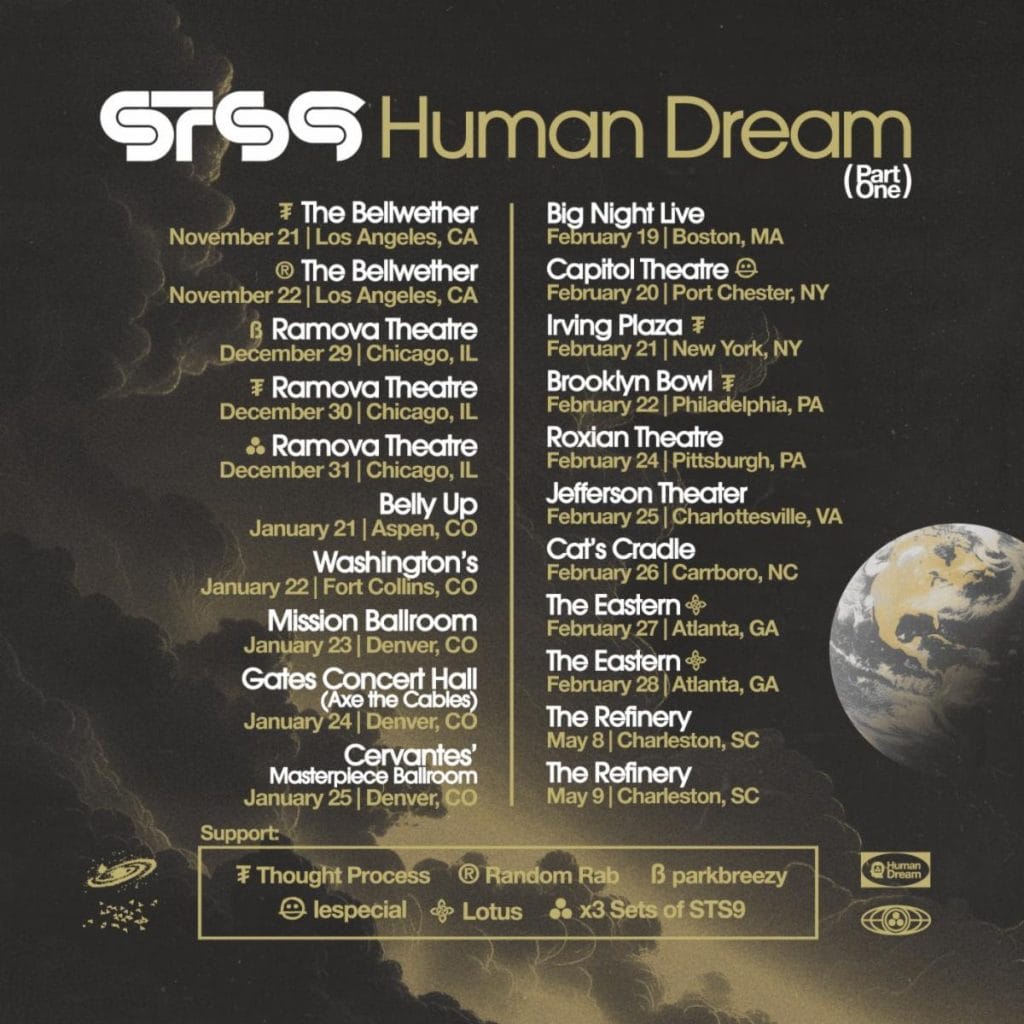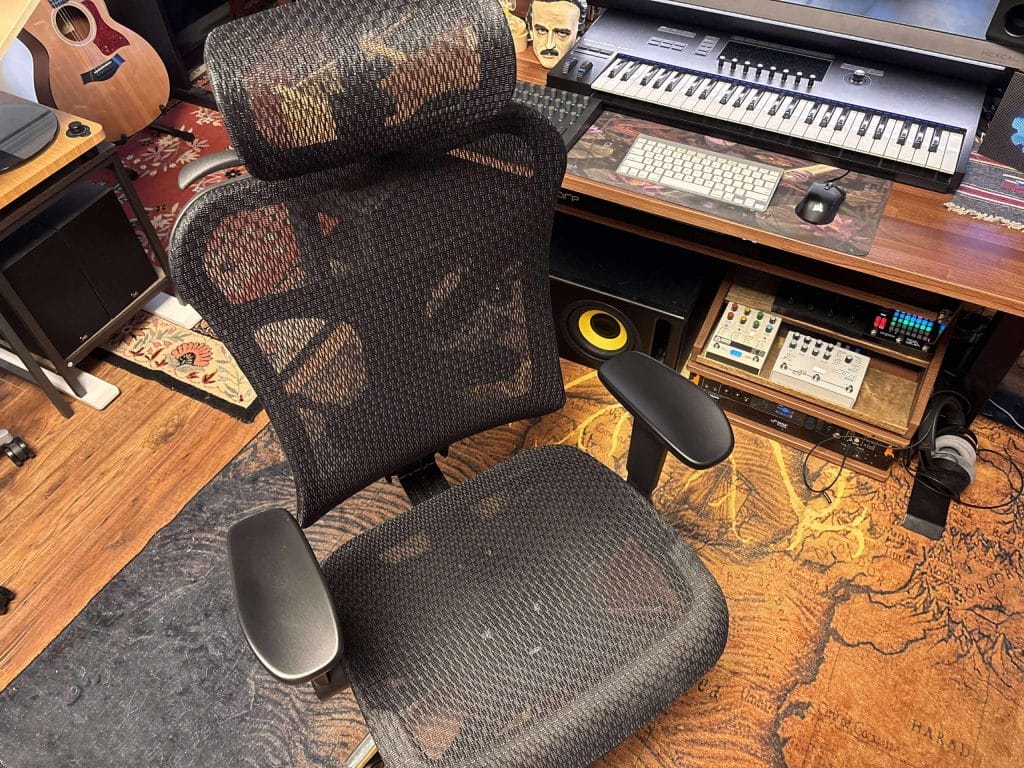Table of Contents
I’ve gone through a lot of chairs in my studio over the years, from basic office chairs to higher-end models that were supposed to be ergonomic. None of them ever felt right for long sessions. The Voyager II caught my attention because it claims to have been built with musicians in mind. The foldable armrests alone were enough to make me curious, but once I looked closer at the design, it was clear this was different from a standard office chair or even some of the other gaming chairs I’ve used before too.
When it showed up, I had it out of the box and fully assembled in less than 15 minutes. That kind of simplicity matters when you are already juggling cables, interfaces, and everything else that comes with running a studio (and yes, I know cables and synths are a different beast than a basic old chair, but the little things add up okay!). It was fast enough that I could get it set up and start working right away without breaking my workflow for the day.
This chair was built for exactly what I do: long sessions of recording, mixing, and playing guitar or working with synths. Instead of adapting my setup around my chair, the Voyager II fit seamlessly into the way I work and in this full review we’ll be covering everything I liked, loved, and wasn’t impressed by. So let’s get after it…
Build Quality On The Voyager II Studio Chair
The first thing that was super cool to me was the mesh material. Studios can run warm, especially when you’re tracking for hours or moving between instruments and gear. I’ve owned leather and fabric chairs in the past, and over time, they either stained, trapped heat, or started feeling uncomfortable. The mesh on the Voyager II doesn’t have those problems. It’s breathable, it holds up well during long sessions, and it feels built for exactly the kind of work I do every day.
The frame itself feels stable and dependable.
The wheels roll quietly, which might seem minor, but when you’re constantly moving between a desk and a rack of gear, little details like that start to matter. Even after long sessions, the chair has stayed solid and hasn’t developed the wobbles or looseness that cheaper chairs tend to get after a few months.
Nothing about this chair feels overdesigned or unnecessarily flashy. It has the kind of build that blends into a working studio – not a piece of furniture you have to think about, but one you can rely on every time you sit down.
Ergonomics That Make a Difference
Once I figured out how to position myself properly in this chair, the ergonomic design clicked. Sitting further back engages the lumbar support in a way that makes a noticeable difference. It’s not the kind of adjustment you think about when you first start using it, but after a few sessions, I realized I was finishing work without feeling the usual tension in my back.
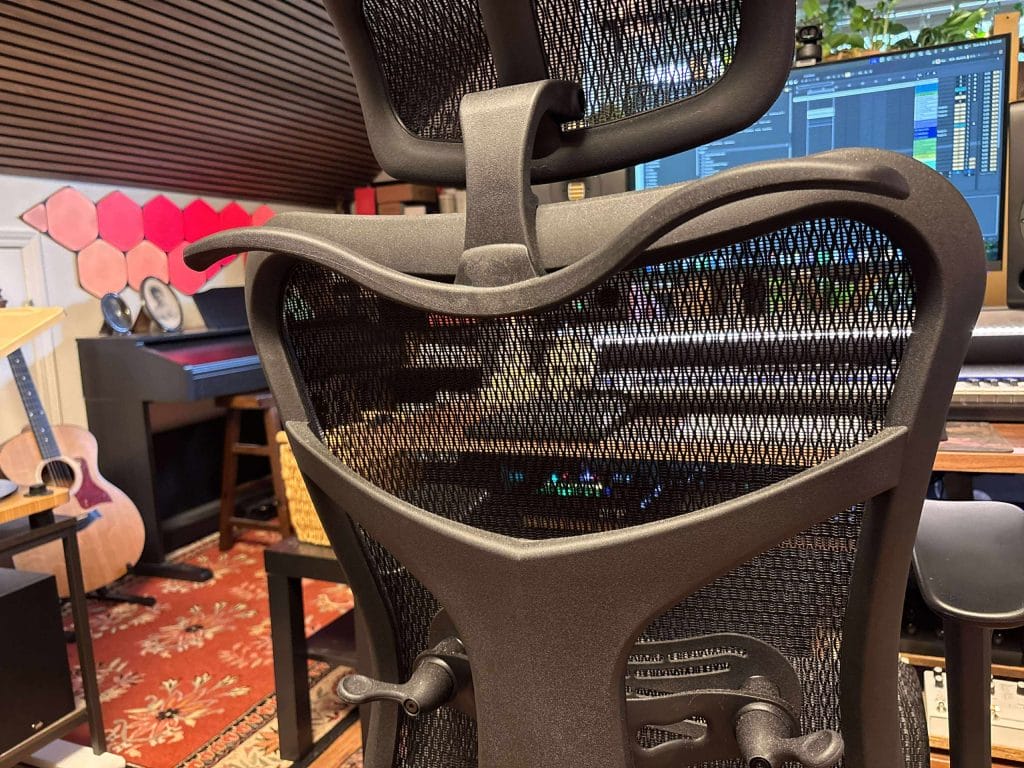
The headrest deserves mention as well and so does the coat rack (which honestly, I won’t spend much time on the coat rack but a simple nod referencing that it’s there certainly deserves a bit of space and a nod). It only adjusts vertically, but that has been enough to help me during long hours of editing or arranging. I like that it doesn’t get in the way when I lean forward to tweak gear or pick up a guitar. It adds support without interfering with how I move in the studio.
For me, the ergonomics have been less about one big feature and more about how the chair encourages you to sit in a way that supports long sessions. It’s the kind of comfort that you don’t notice at first because you’re busy working, but by the end of the day, you feel the difference.
Armrests That Actually Work for Musicians
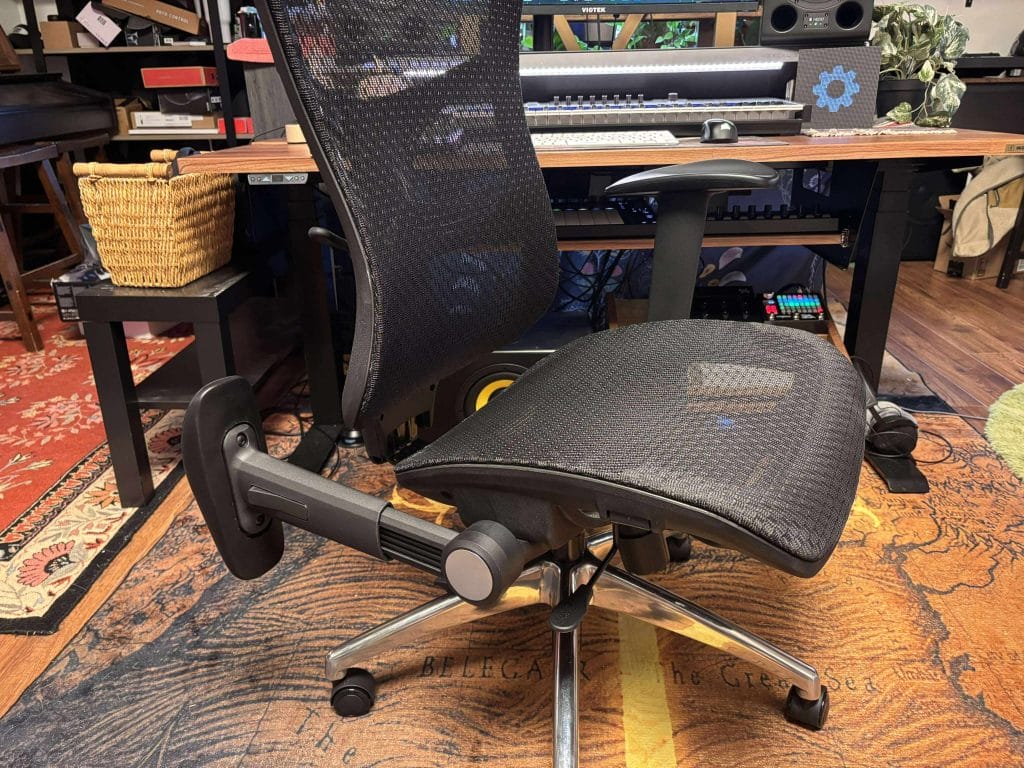
The foldable armrests are one of the most musician-friendly features I’ve seen on any chair. I track guitar often, and being able to move the arms out of the way completely has changed how natural it feels to play at my desk. I no longer have to shift around or angle my guitar awkwardly just to make room.
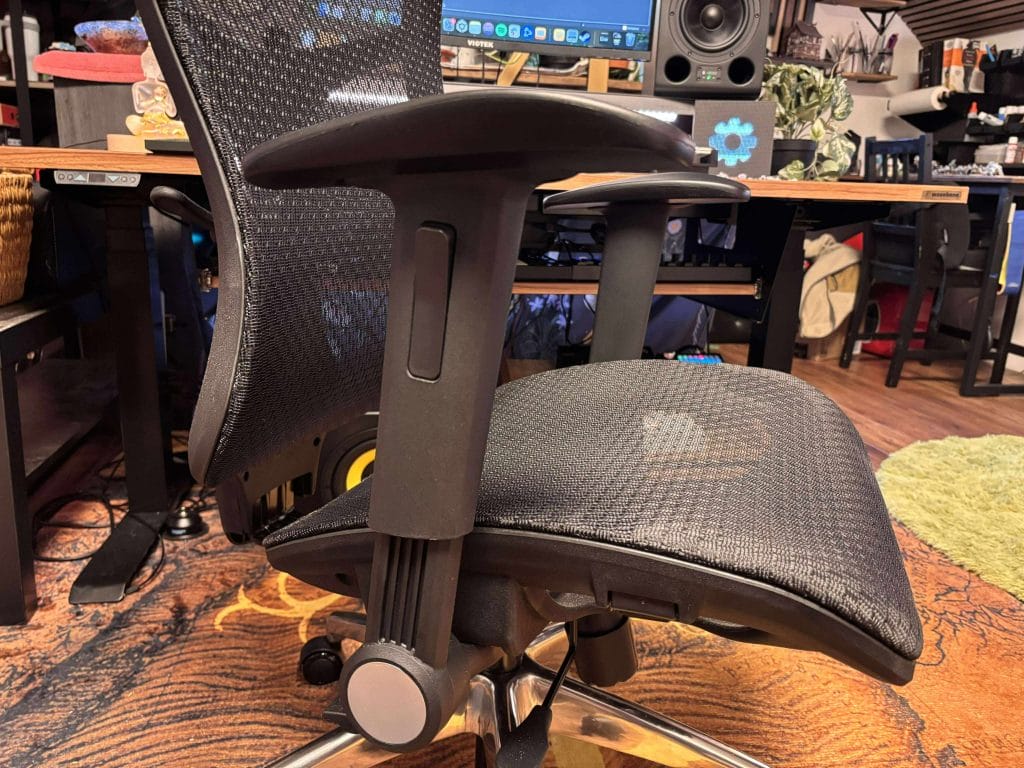
This has been just as useful when I’m working with hardware synths or other gear that requires a lot of movement. With the armrests folded back, there’s room to lean in and interact with everything without feeling boxed in. It makes the chair feel like it adapts to the session rather than the other way around.
After using it this way for a few weeks, I started to appreciate how much time and hassle it saves. Instead of getting up or changing positions constantly, I can stay locked into a workflow that feels natural. For studio work, that kind of convenience is hard to overstate.
Quick Assembly and Easy Adjustments
One of the best parts about this chair is how simple it is to put together. I’ve had other studio furniture that took hours to build, but this was fast and painless. No extra tools, no confusing instructions – I had it ready to use in under 15 minutes.
And sure, I know I gave this a quick shout in the introduction of the article, but I guess I’m just so used to complex assemblies with crappy directions on how to put the thing together that when I finally gert a rpoduct that is as simple as the instructions make it seem, it knocks my socks off… I guess that shows you how much the IKEA-meta of assembly instructions has moved the goalposts over the last five years.
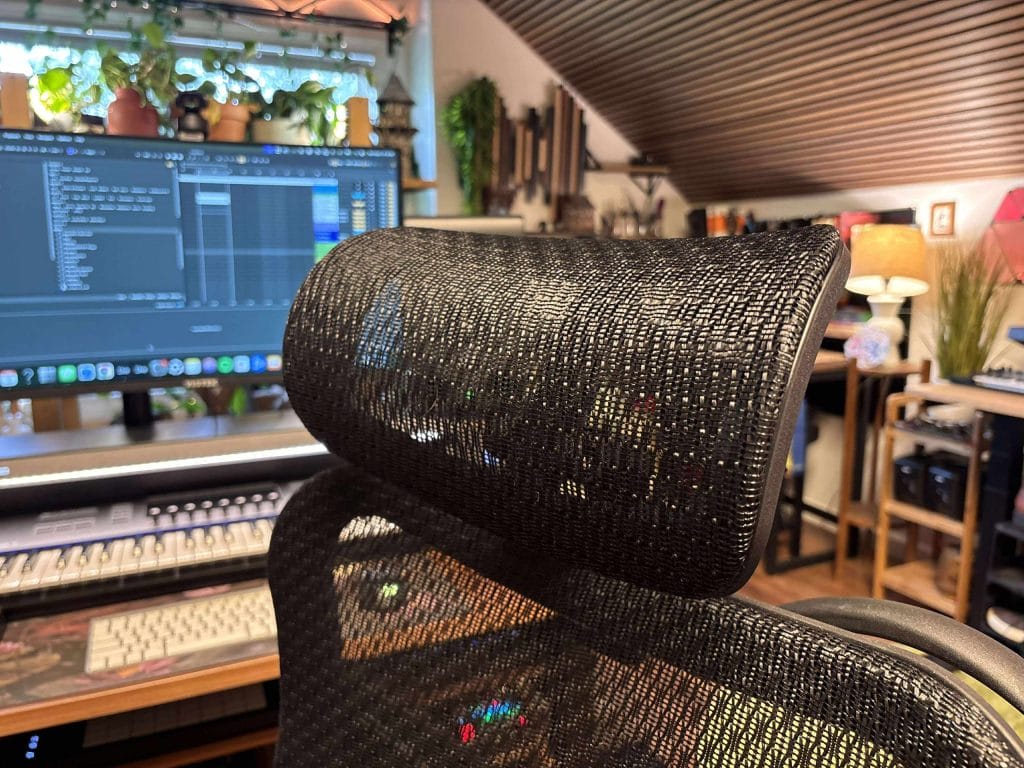
The adjustments are straightforward as well. The seat height, tilt, and headrest are easy to dial in without any trial and error. The only thing I would like to see is more incremental armrest locking positions, but since they fold completely out of the way, it hasn’t been a real issue in practice.

Because of how quickly it goes from box to studio-ready, it feels like a chair that was designed for people who actually want to get back to work instead of wasting time setting up. That alone made the initial experience a lot smoother.
Is It Worth $499?
At $499, the Voyager II is not the cheapest chair on the market, but the value is clear once you use it. I’ve bought less expensive chairs before, and they always ended up being something I replaced after a year or two. I’ve also used chairs that are 3x the price as this, and that have not been pushed aside to my auxiliarly work desk in place of this chair as my main studio desk chair. This one feels like it’s going to last, and that changes the way I think about the price.
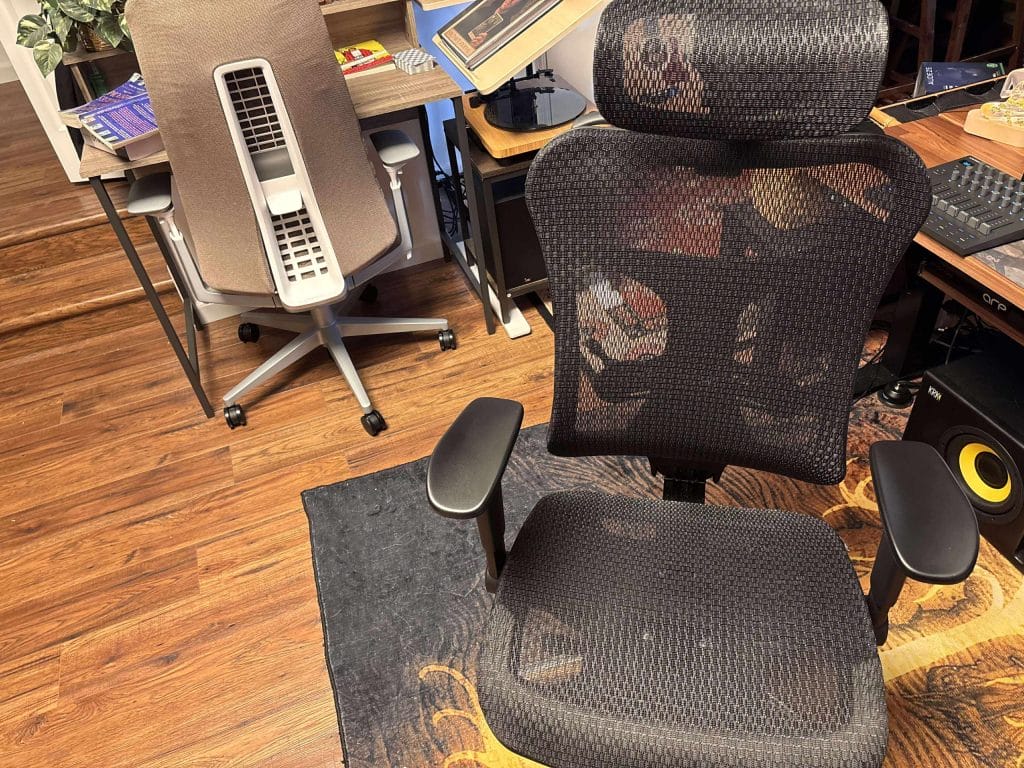
The real value is in how much more comfortable my work sessions have become. I’m spending long hours in the studio without the usual aches or fidgeting to stay comfortable. That kind of improvement doesn’t show up on a spec sheet, but it matters every single day I use it.
A chair might not be the most exciting studio purchase, but this one has turned out to be one of the smartest. The return comes in comfort, efficiency, and the ability to stay focused on making music instead of adjusting my seat.
What I Liked Most
- Breathable mesh seat that stays comfortable during long sessions
- Foldable armrests that make guitar tracking easier
- Simple and fast assembly
- Solid back support once properly positioned
What Could Be Better
- Headrest only moves vertically
- No multiple armrest lock positions
- Some plastic parts feel basic for the price
Final Thoughts
The Voyager II has become a chair I use every single day without thinking about it, and that’s probably the best thing I can say about it. It fits seamlessly into the way I work and has removed a lot of the discomfort that used to creep in during long sessions.
The breathable mesh, foldable armrests, and simple design have made it one of the most practical pieces of gear in my studio. It feels like it was built for musicians who actually need to move between instruments, gear, and the desk all day.
After weeks of using it, I can say I’m glad I got the chance to check it out (thanks, Wavebone for sending it over). It’s one of those purchases that improves your studio life in ways you notice more and more the longer you use it.
The post Is the Voyager II Studio Chair Worth $499? My Full Review After Weeks of Use appeared first on Magnetic Magazine.



